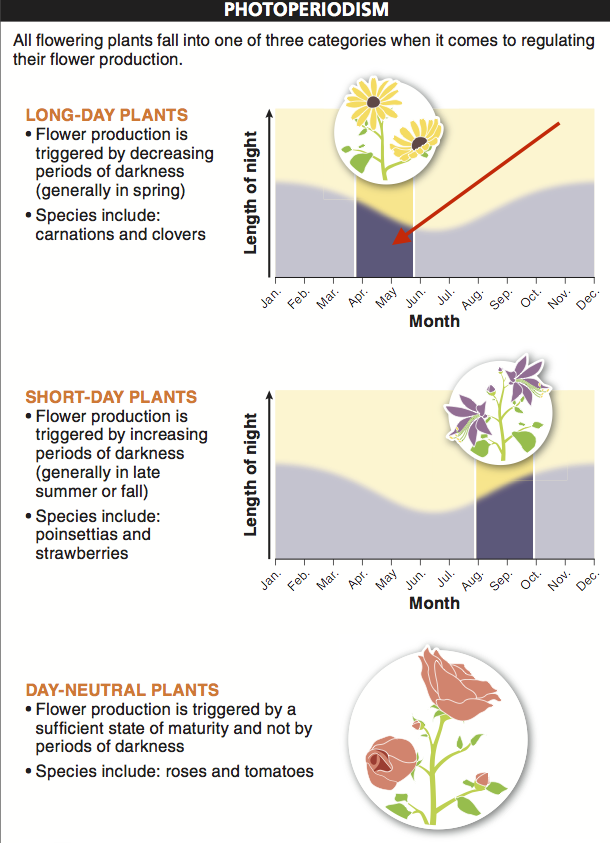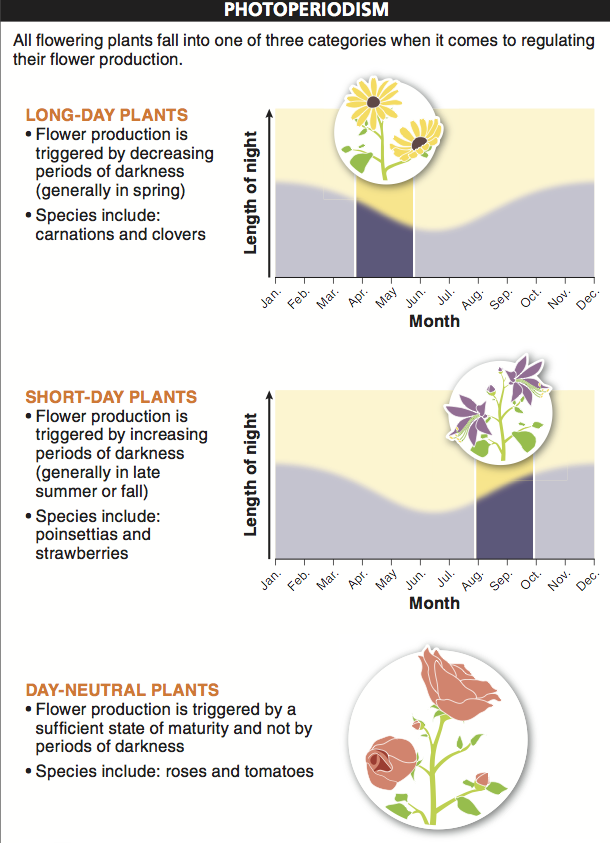
Chapter 19. Chapter 19 Graphic Content
Introduction

Instructions
Review the information provided in the graph to answer each question below.
After submitting your answer, you will be provided feedback to check if your response is correct.
(This activity contains 6 questions.)
1.

1. What does this shaded region represent?
2.

2. What does the purple area on the graph represent? What does the yellow area represent?
3.

3. What are the actual data presented in each graph?
4.

4. What can you conclude from these graphs about the environmental factor that causes flowering? Assuming that the information in the graphs (i.e., the periods during which flowers are produced and are not produced) is correct, what additional information could undermine your conclusion?
5.

5. In the southern hemisphere, the amount of daylight is greatest in late December and is least during late June. What are the implications of this for long-day and short-day plants?
6.

6. How is the information in these graphs useful for landscape architects and gardeners?
Activity results are being submitted...